Your cart is currently empty!
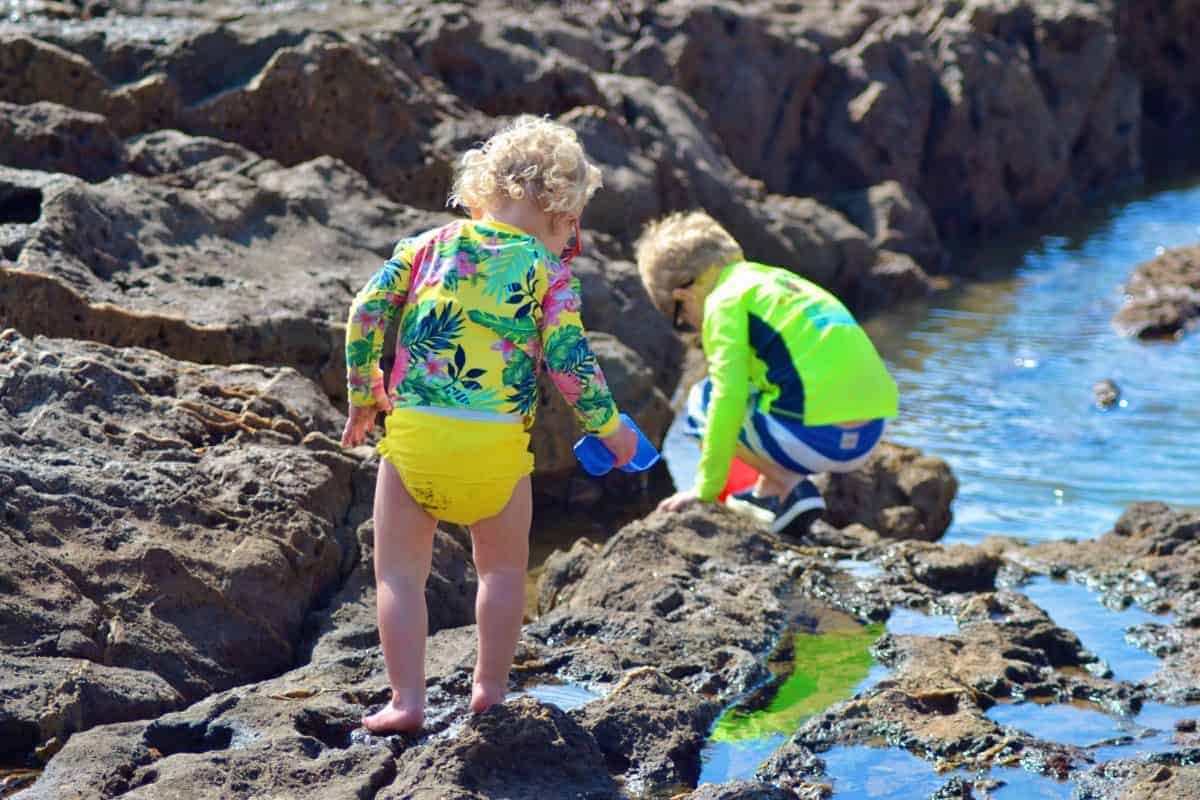
Exploring Tide Pools with Kids
I’m so excited to bring you this guest post today all about exploring tide pools with kids. My good friend and fellow outdoor adventure mama Desirée Macke put together an absolutely fantastic post all about what kind of treasures you can find in the tide pools, when to go, what to pack, what to wear and even the best tide pool locations across the country. As a landlocked mama, I dream of doing these types of explorations with my kids. If you’re on or close to a coast (or even visit for vacation), I highly recommend checking out a tide pool with your kids. You will not be disappointed!
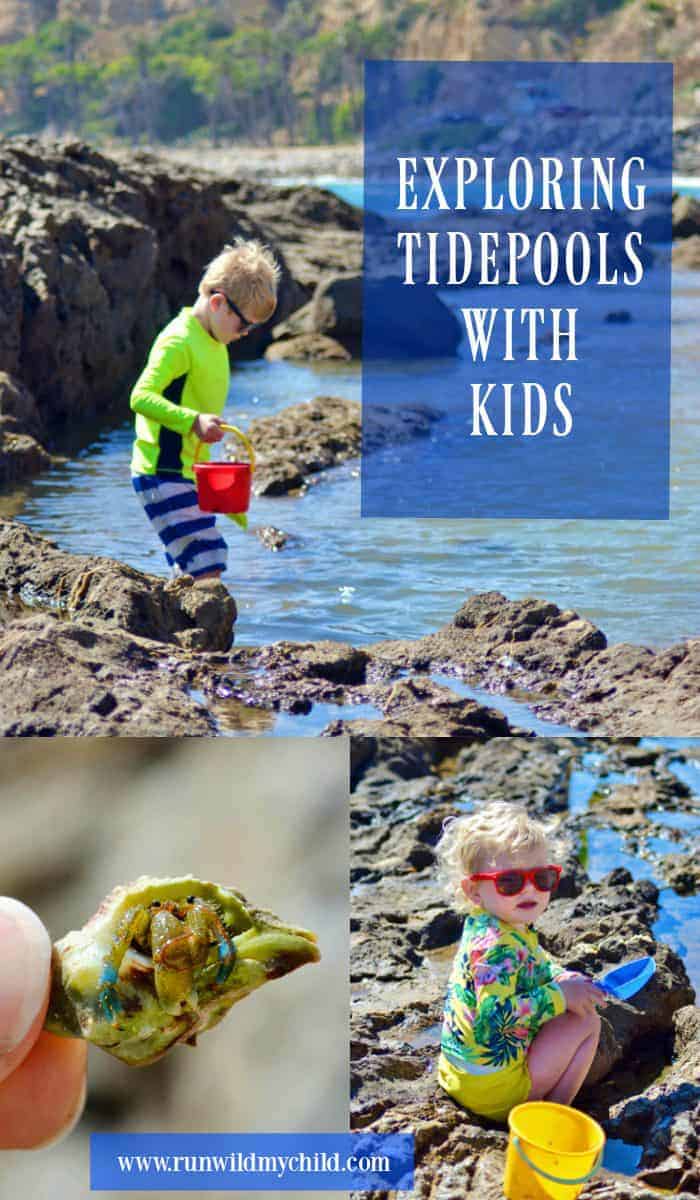
Not all beaches are created equal
When you think of beaches and the shore you likely think of the kind of beach that slopes gently into a sapphire ocean, and a shore that is nice and smooth. You probably think of the kind of beach with soft, powdery sand that is good for sand castle building, and the shore being perfect for floating, splashing, and jumping waves as they break. For the longest time, I thought that was the only kind of ocean experience there was.
I was born and raised in a landlocked state, we didn’t get out past the cornfields very often. It wasn’t until moving to the West Coast and having children that I realized the ocean varies greatly, and with different shorelines come vastly different shore experiences. We now live in the thick of Los Angeles, and while the concrete jungle offers a lot for us to do, more often than not we crave getting out into nature. One of my kids and my all-time favorite activities is not to go to the sandy beaches around us, though those are good fun. Rather, we like to head to a local rocky beach and scout out the tide pools that lie just offshore.
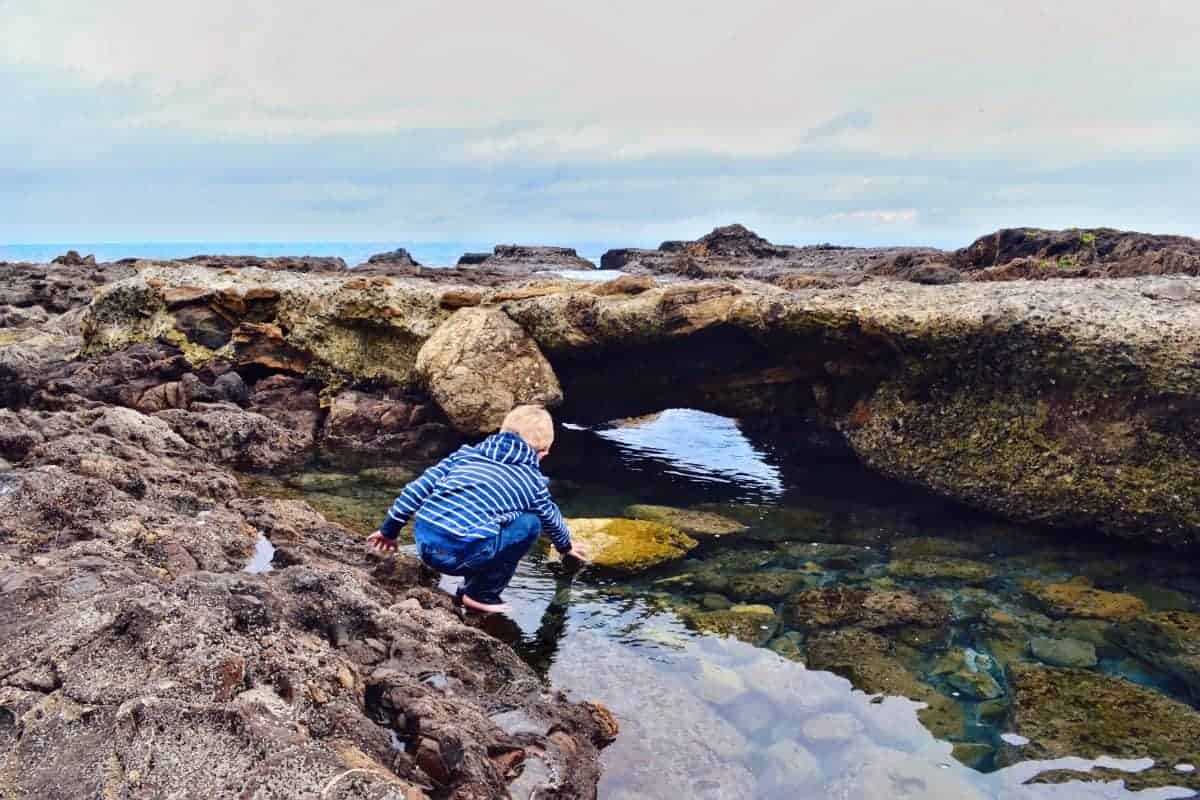

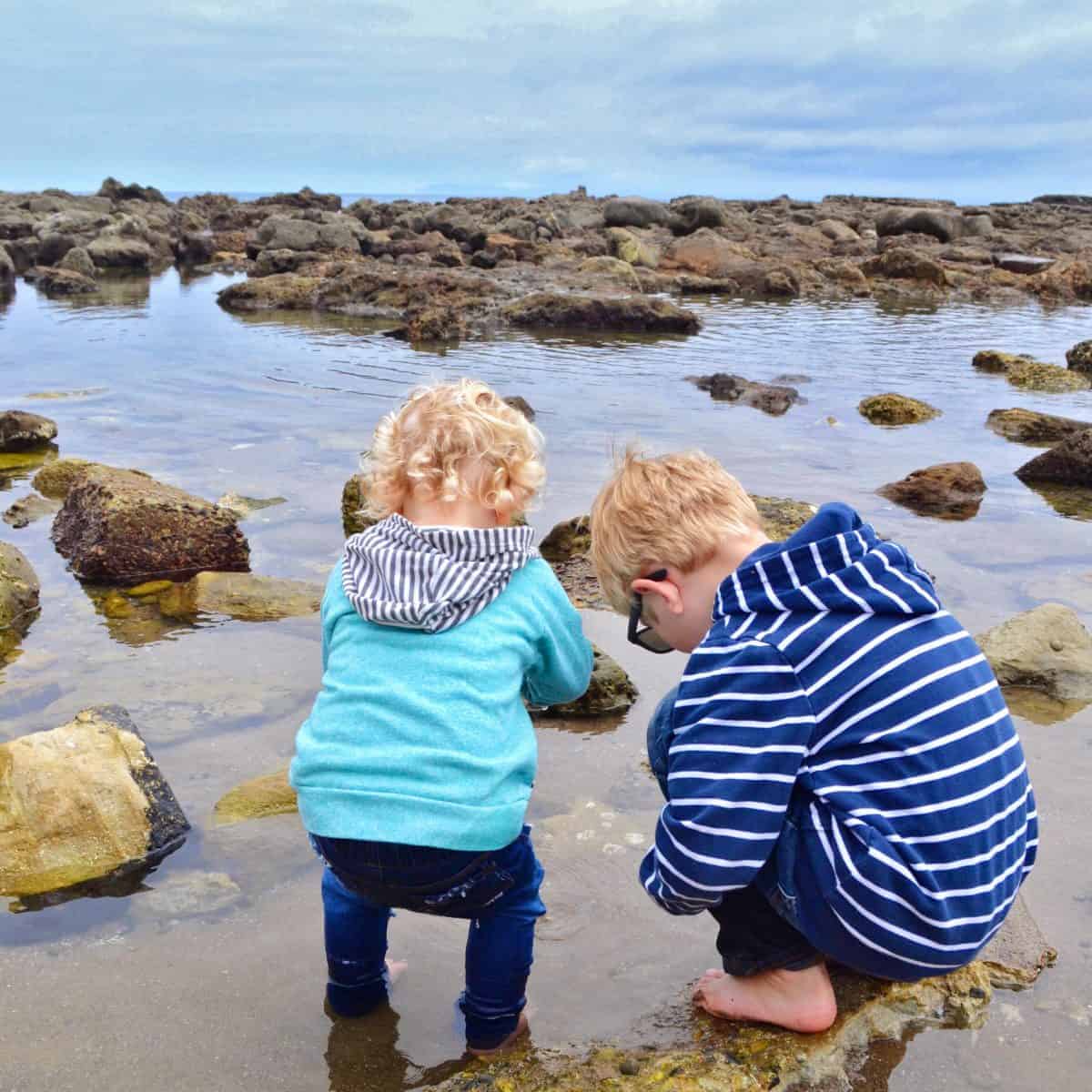
Tidepool treasure hunting
There is something invigorating about the sun, salty air, and refreshingly cool waters that we can’t get enough of. I love letting the kids loose while under a watchful eye as they explore the shore. The liberties they’re given at the beach are something they absolutely revel in. I love that they can truly run wild. But we also like to slow down and take a good look at our surroundings. Living on the coast means that we have the chance to see and observe some really amazing things that you can’t find many places. Tide pools are our favorite place at the beach to explore.
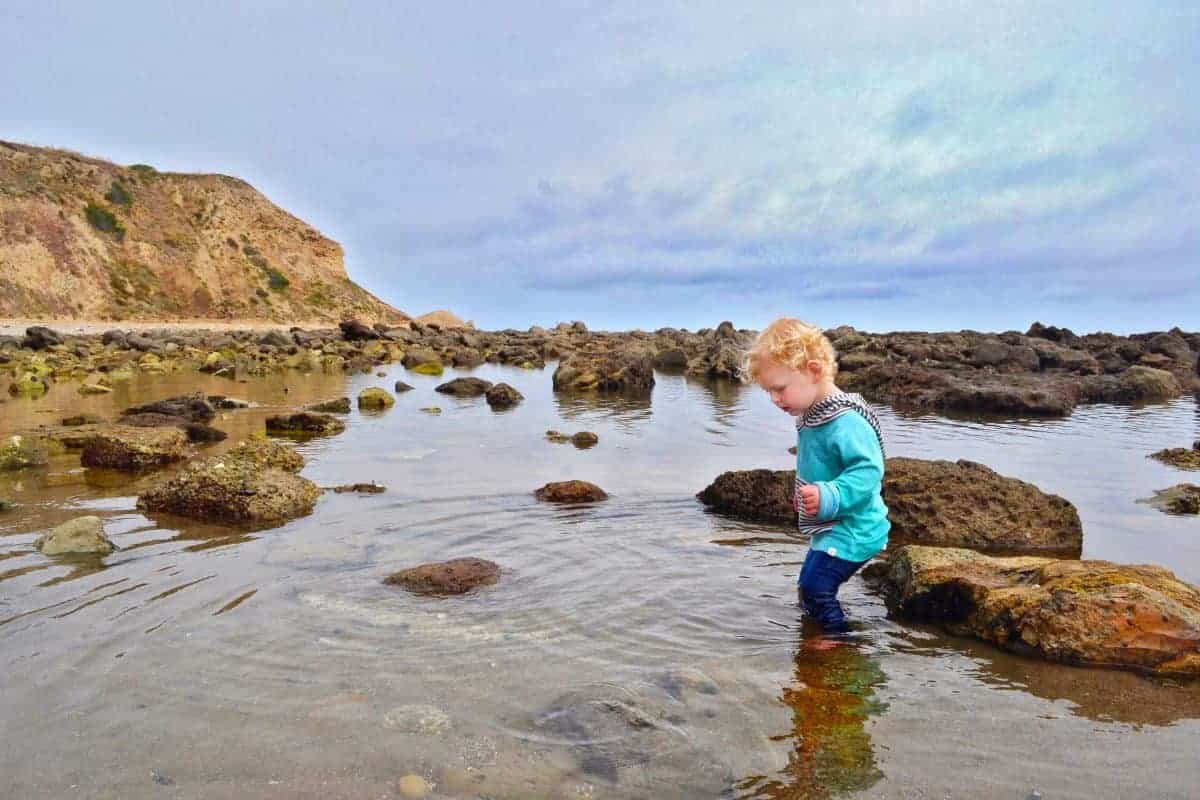
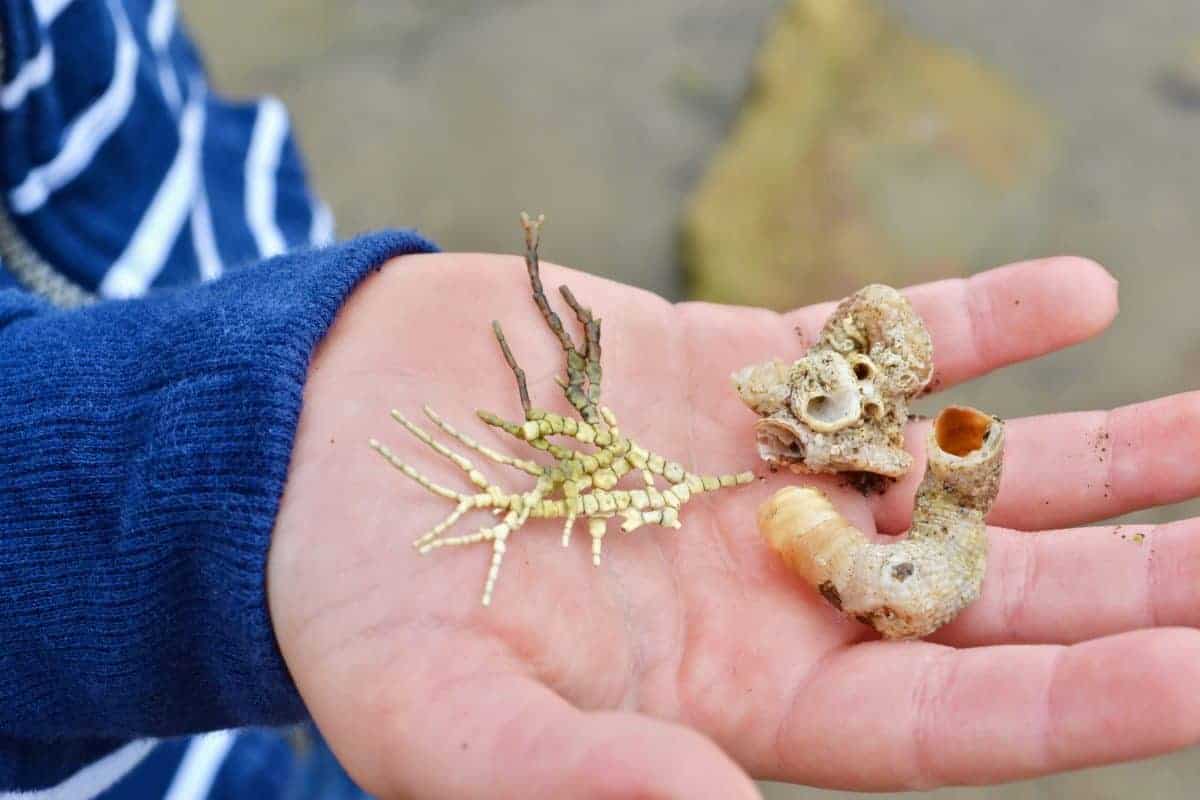
Useful parent tips for tidepooling
As with anything with kids, a tide pool trip takes just a bit of planning to ensure a successful experience for kids and guardians alike. I have a few tips and tricks up my sleeve to make sure our tide pool time is the very best.
1. Know when to go
Low tide is best for exploring tide pools. Check your local tide report daily to see when low tides will occur. There have been a few scenarios where I’ve talked up a grand tide pool adventure only to get to the rocky beach and see…no tide pools. When the tide is high, the pools fill up. A high tide won’t necessarily make exploring impossible, but it will make it significantly more difficult with small children.
Try to get to the pools about an hour before the peak of low tide, and can stay for at least an hour and a half before the tide starts to noticeably rise.
2. Hit the early tide
Each day has two low tides and two high tides. If you like exploring with few other people around, hit up the early low tide cycle if possible. The morning low tides tend to have fewer people at the beach, which means more room to roam and more discoveries for you.
3. Look up
Don’t forget to look up once in a while! So often we are all so focused on what’s at our feet that our heads are constantly pointing down. On one of our most recent tide pool trips I just happened to be looking out at the ocean, and lo and behold, a small pod of dolphins was no more than 50 yards from us playing – a special treat no matter which beach you’re visiting!
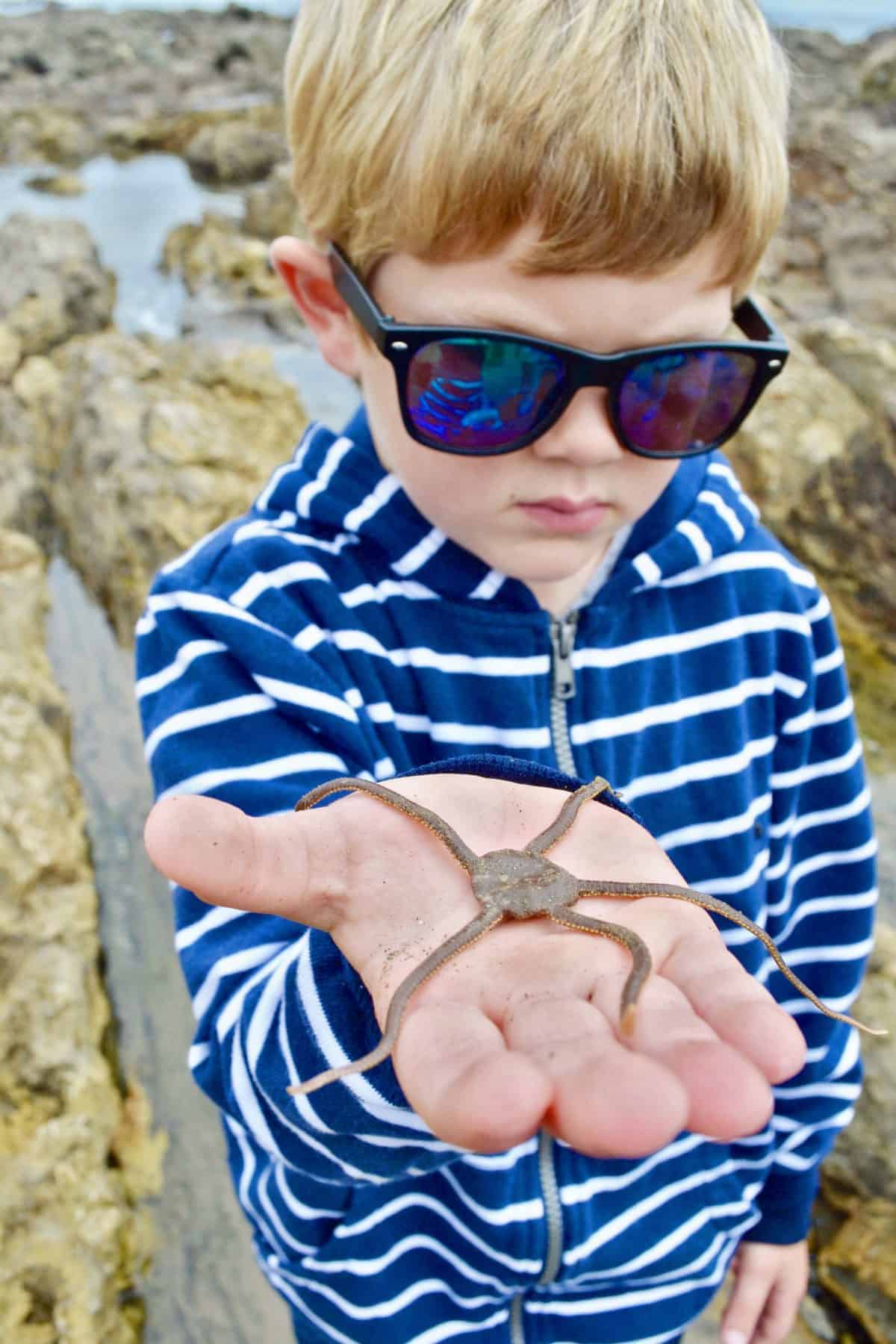
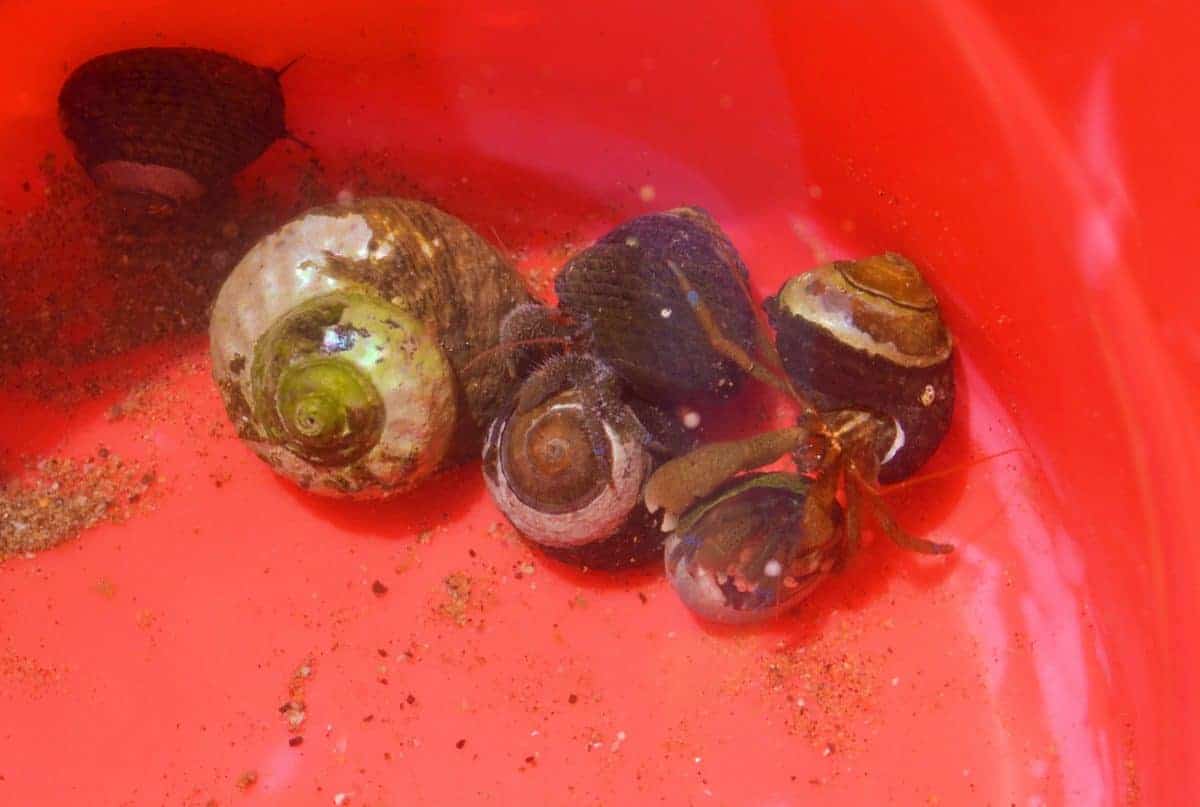
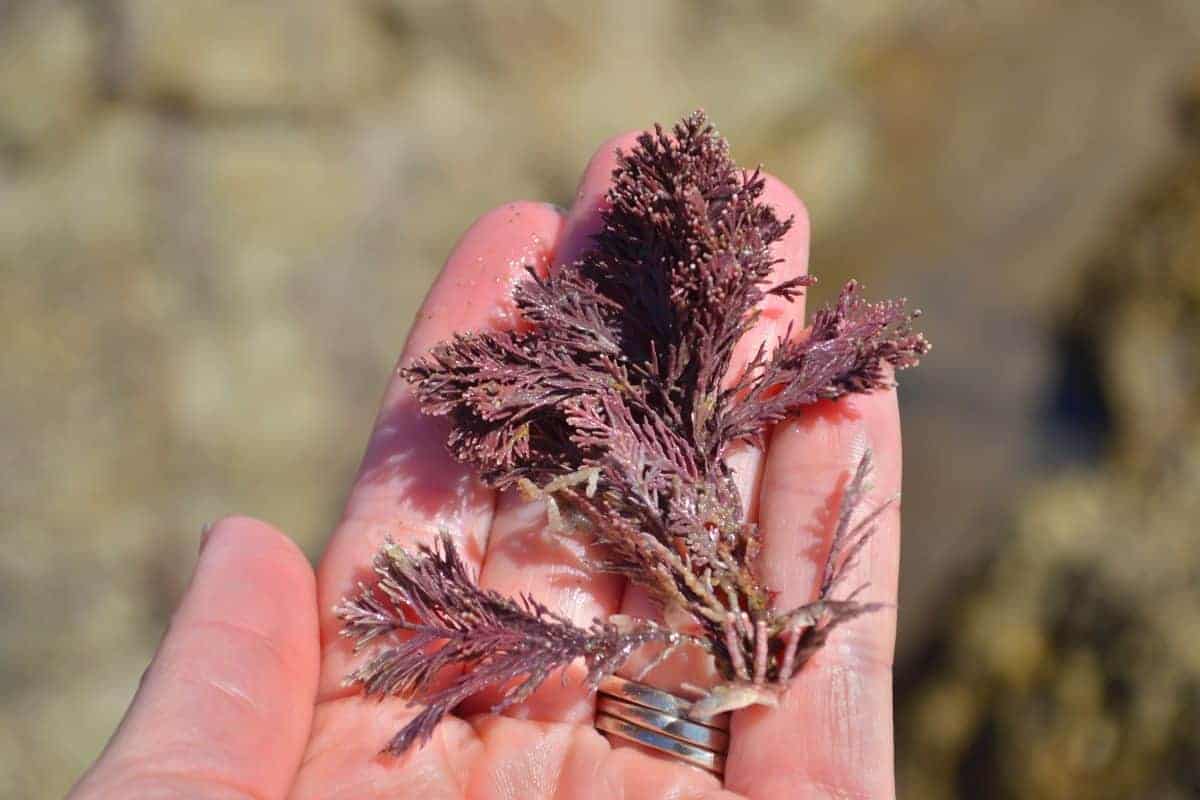
Things to look for in the tide pools
I highly recommend that you brush up on local marine life before you go exploring the tide pools with your kids. Before heading to the shore, take a few minutes to educate yourself on what you’ll likely find in the tide pools in your area. Our first few trips to the tide pools I admittedly had no idea what we were looking for, or what we were looking at when we would excitedly discover something new. The question, “What is this?” was asked numerous times, and my answer was “I’m not sure,” more than I care to admit.
Most creatures in the tide pools do a magnificent job blending in with the environment. Keep in mind that it can take some time and effort to find some of the sea life living in the pools.
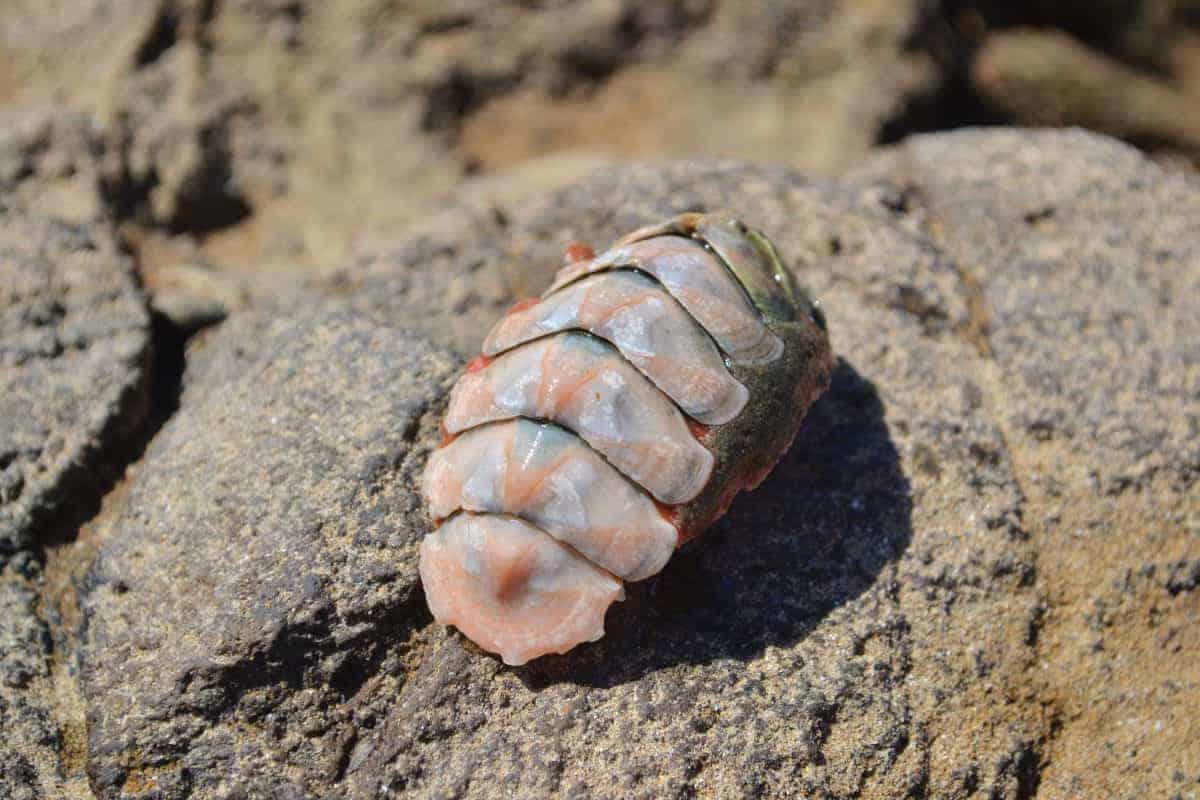
- Algae. As you move to the lower depths of the tide pools at a minus tide you may encounter various species of algae.
- Anemones. We love these because you can gently press on an anemone and often it will close around your finger and squirt out water.
- Barnacles. Barnacles have a rough or corrugated outer shell and where you find mussels or on exposed rock surfaces.
- Coral. There are so many different shapes, sizes, and colors of coral found in tide pools.
- Crabs of varying species. Hermit crabs are a fan favorite in our house.
- Octopus. We have only spotted an octopus once, and sadly, the big guy didn’t have a pulse.
- Seashells. We’ve found that the rockier beaches tend to have shells on the small side, but that doesn’t stop us from searching for the prettiest ones we can find.
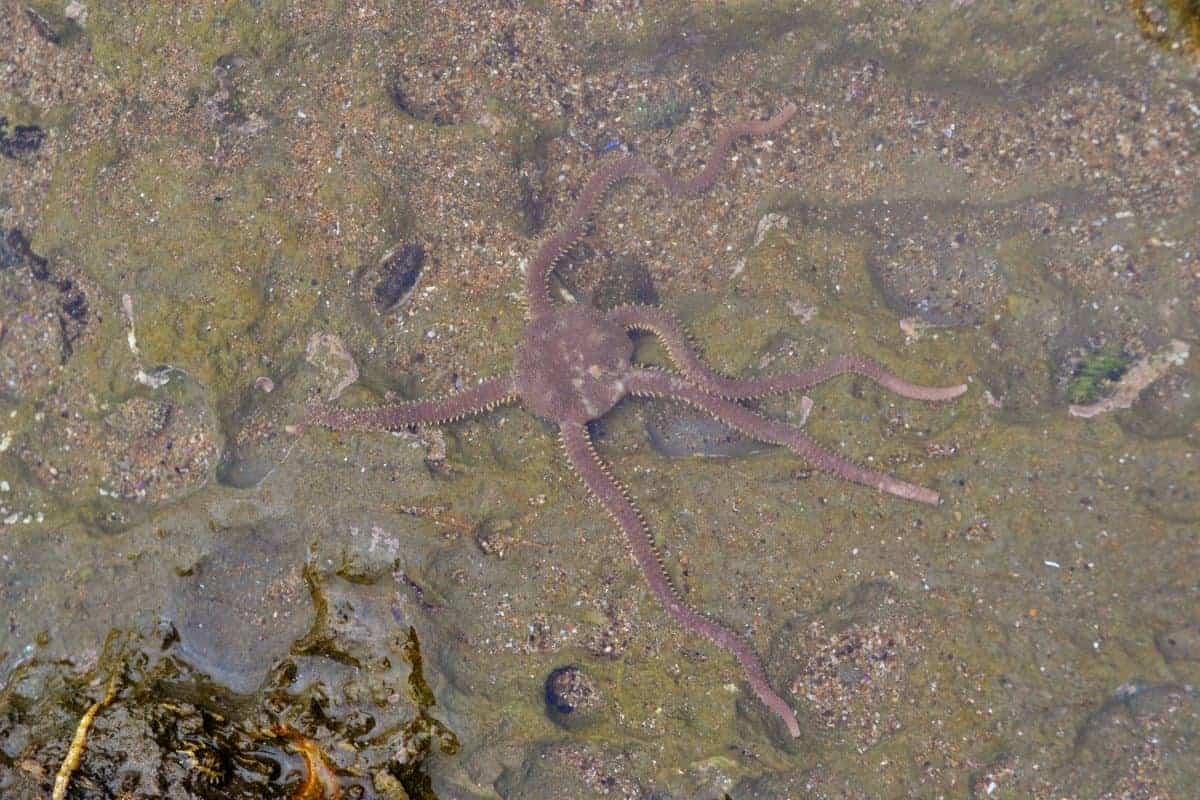
- Sea stars. In all of our trips we’ve only found one sea star, and it was certainly a highlight for all of us.
- Seaweed. I encourage the kids to gently touch seaweed and feel its textures. I love asking questions such as, “Is it slimy? Is it rough? What do the little bulbs remind you of?”
- Small fish. No matter how many times we see these tiny fish in the pools the kids always squeal with delight as the fish dart around our feet.
- Starfish. We’ve only been fortunate to spot a starfish once. It clung to the rocks so ferociously that it was impossible to pick him up.
- Snails. Sea snails are of no shortage in the tide pools, and my daughter is tickled each time she finds one.
- Sea Urchins. Live urchin are everywhere in various shapes, colors and sizes. The dried urchin shells are a bit harder to find, as they are quite fragile and oftentimes break and shatter. Finding a whole, undamaged sea urchin is truly a treasure.
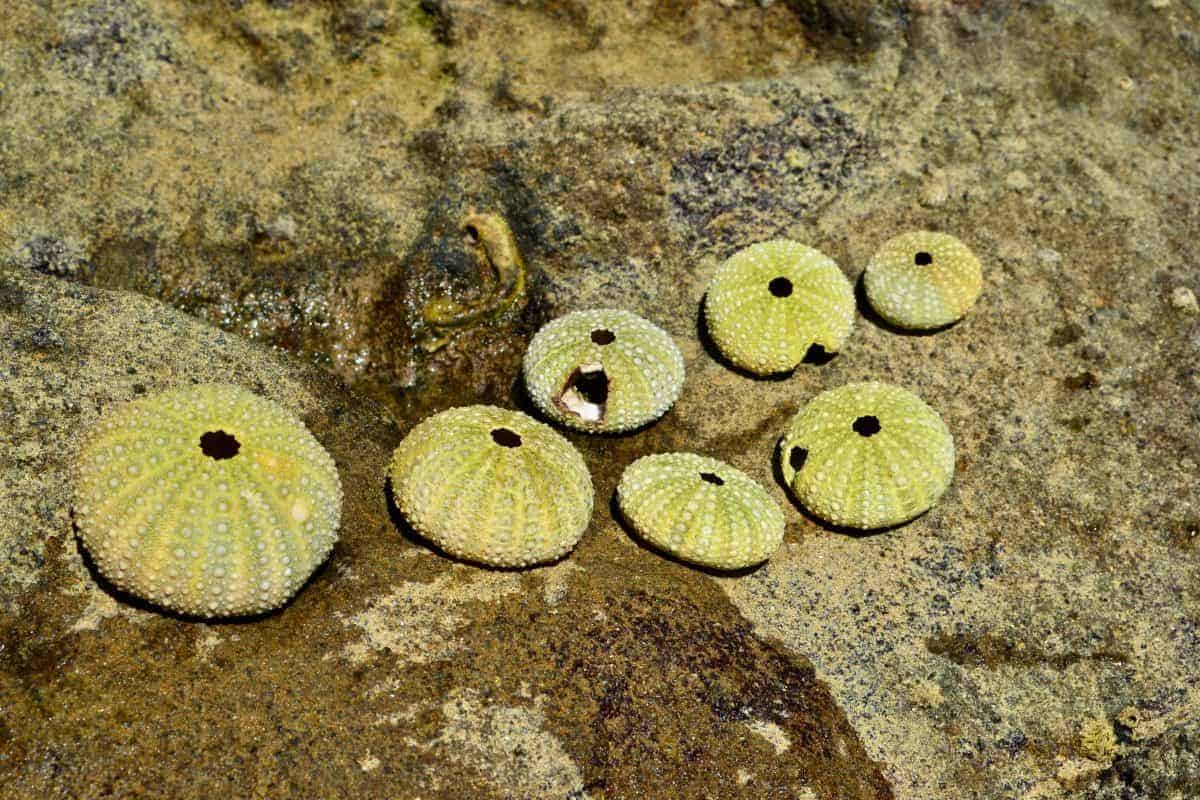

What to wear to the tidepools
This totally depends on just how far into the tide pools you want to go, and how willing you are to get wet. Sometimes we head to the pools in our everyday clothes. If I know our trip will be short I always toss a spare change of clothes in the car. No matter how short our stay, one of the kids inevitably ends up soaked. If I know our tide pool trip is going to be for an extended period of time we’ll go in our swimsuits.
Sunglasses and hats are a must. Footwear is dependent on each person and each tide pool. Our tide pool bottoms have mostly round, smooth rocks, so my kids and I prefer to go barefoot so our toes can curl around rocks for better gripping. However, if your tide pool has sharper rocks a good pair of water shoes would be useful.
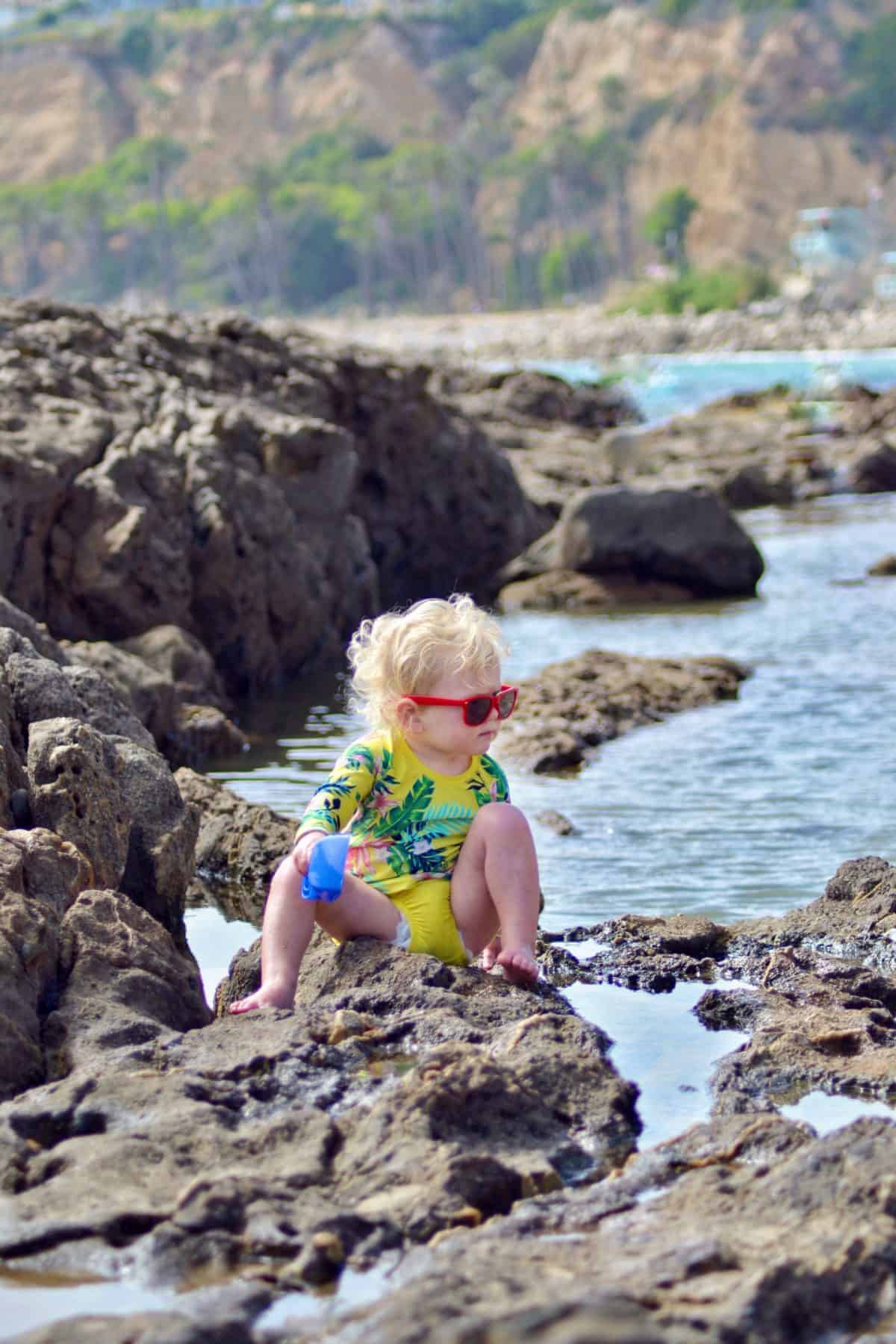
What to pack for tidepool adventures
Because our rocky beach doesn’t provide the most comfortable lounging we typically don’t bunker down for an entire day. That’s not to say we don’t spend hours and hours at the tide pools. For the kids and myself I can typically pack everything we need into one standard-size backpack.
- A good reef-friendly waterproof sunscreen, which is reapplied at least every 30 minutes. Unless you’ve brought an umbrella or some sort of tent for shade, there is typically no reprieve from the sun.
- Towels for each child.
- A net and a bucket for treasures.
- Enough water and snacks to hydrate and feed a small army.
- A camera to take photos of any and everything.
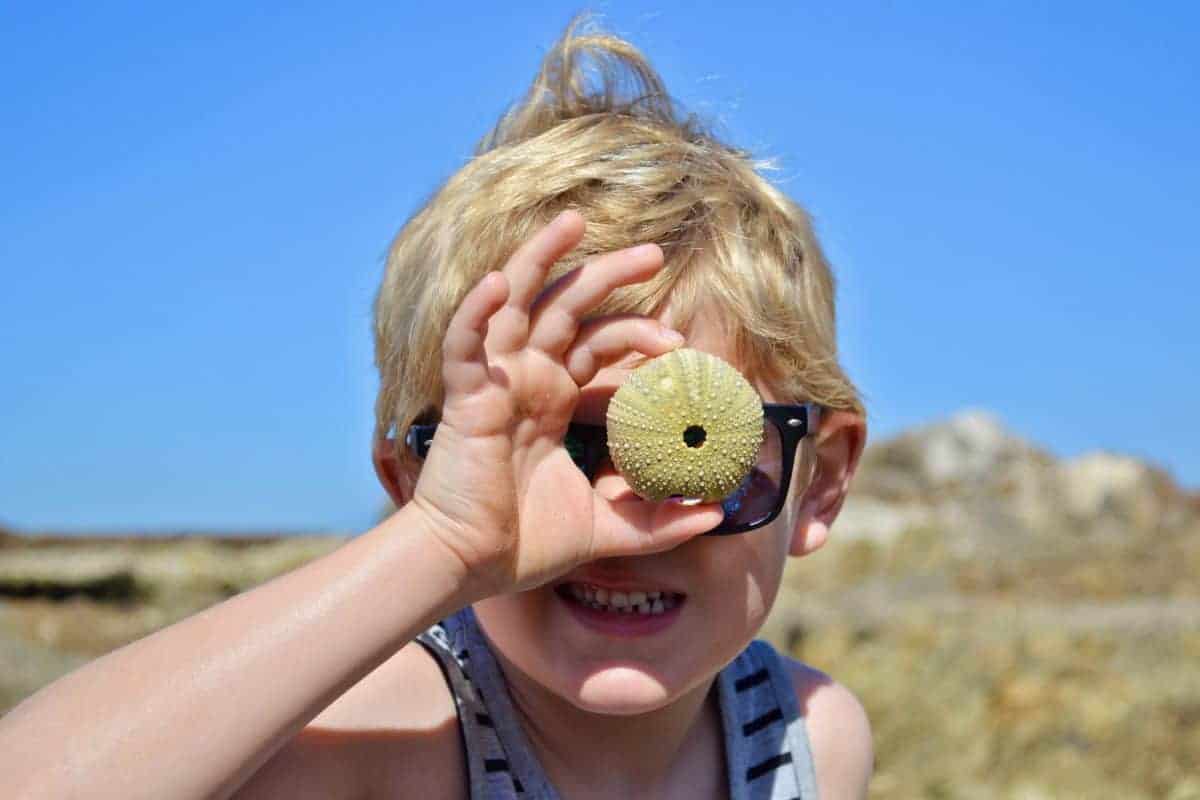

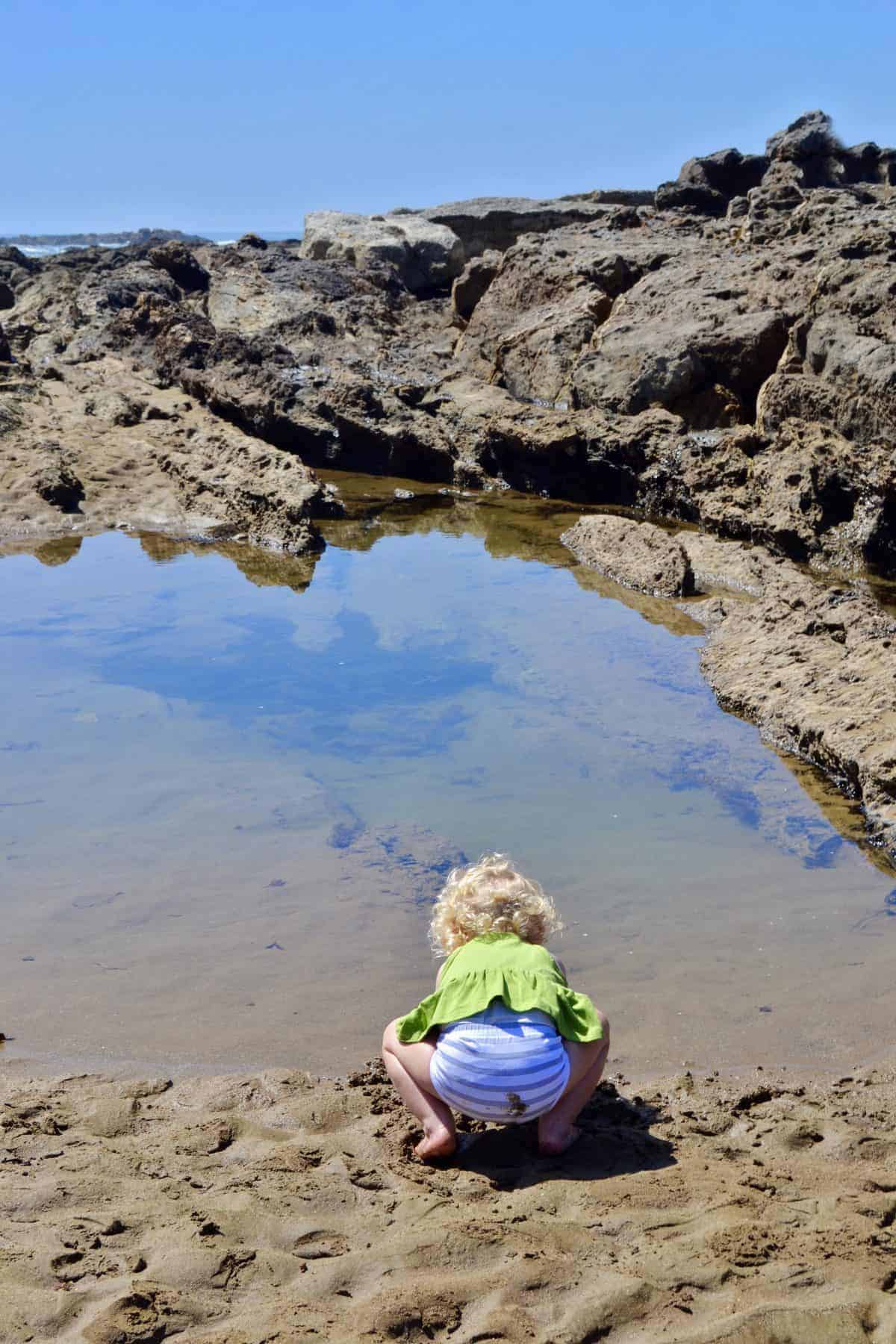
Where to find the best tide pools in the U.S.
- Cabrillo National Monument, San Diego, CA
- Leo Carrillo State Park, Malibu, CA
- Hazard Canyon, Montaña de Oro State Park, CA
- Pillar Point Harbor, Half Moon Bay, CA
- North Point Beach, Morro Bay, CA
- Bahia Honda State Park, Bahia Honda, FL
- Kapoho Tide Pools, Big Island, HI
- First Encounter Beach, Eastham, MA
- Acadia National Park, Bar Harbor, ME
- Yaquina Head Outstanding National Area, Newport, OR
- Hunting Island State Park, Beaufort, SC
- Hole-in-the-Wall, Rialto Beach, Olympic National Park, WA
- Shi Shi Beach, Olympic National Park, WA
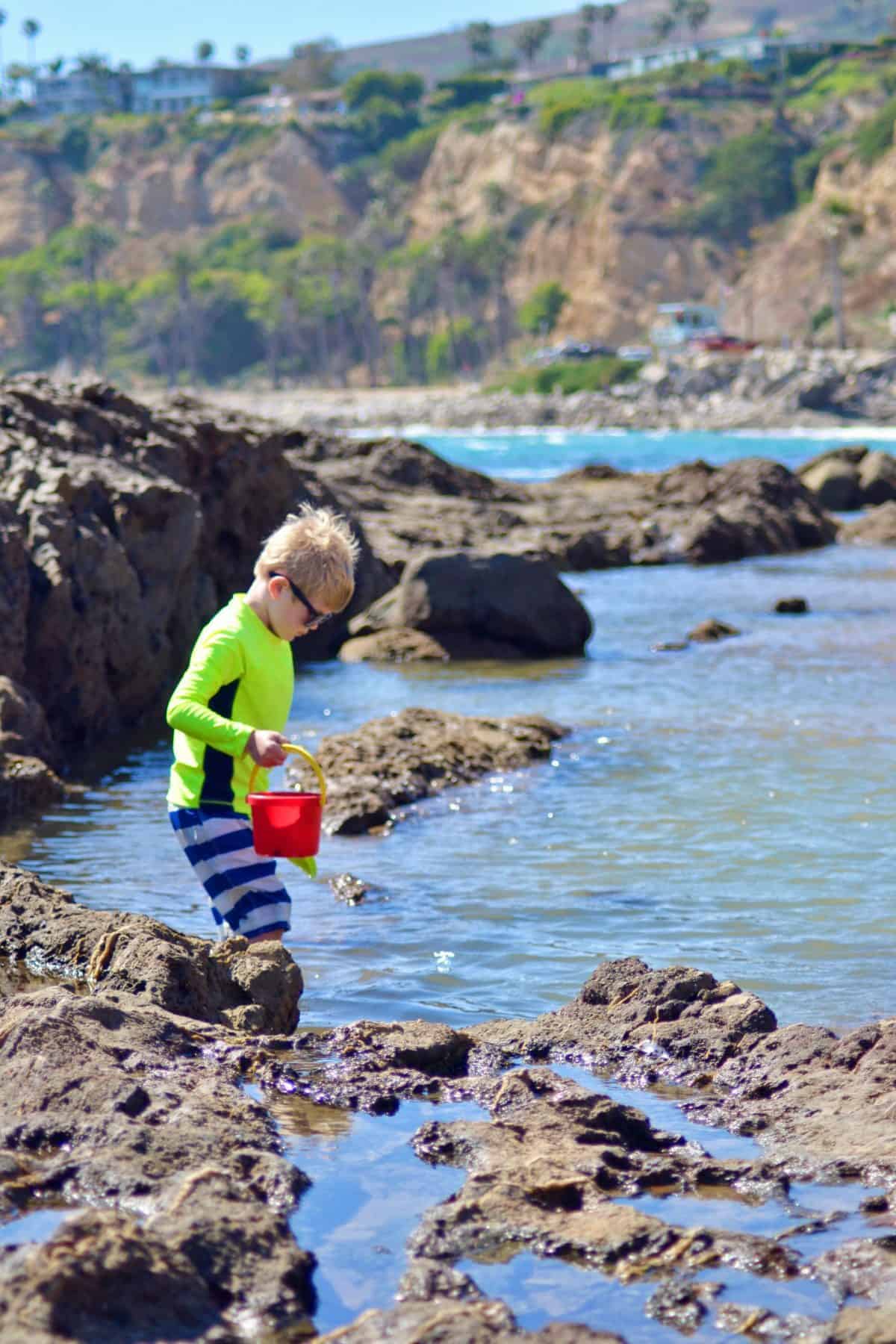

Tread lightly
The last thing to note, and I feel it is the most important, always remember that tide pools are habitats and they are extremely sensitive. Damage or even destruction to the environment can easily happen, particularly with little kids. Teach your children to cautiously make their way around the tide pools and be cognizant of where they’re stepping and what they’re touching. And make sure that when you head home, you leave any marine life that you’ve found at the tide pools. Each animal, plant, and shell serves an important purpose in the fragile habitat.
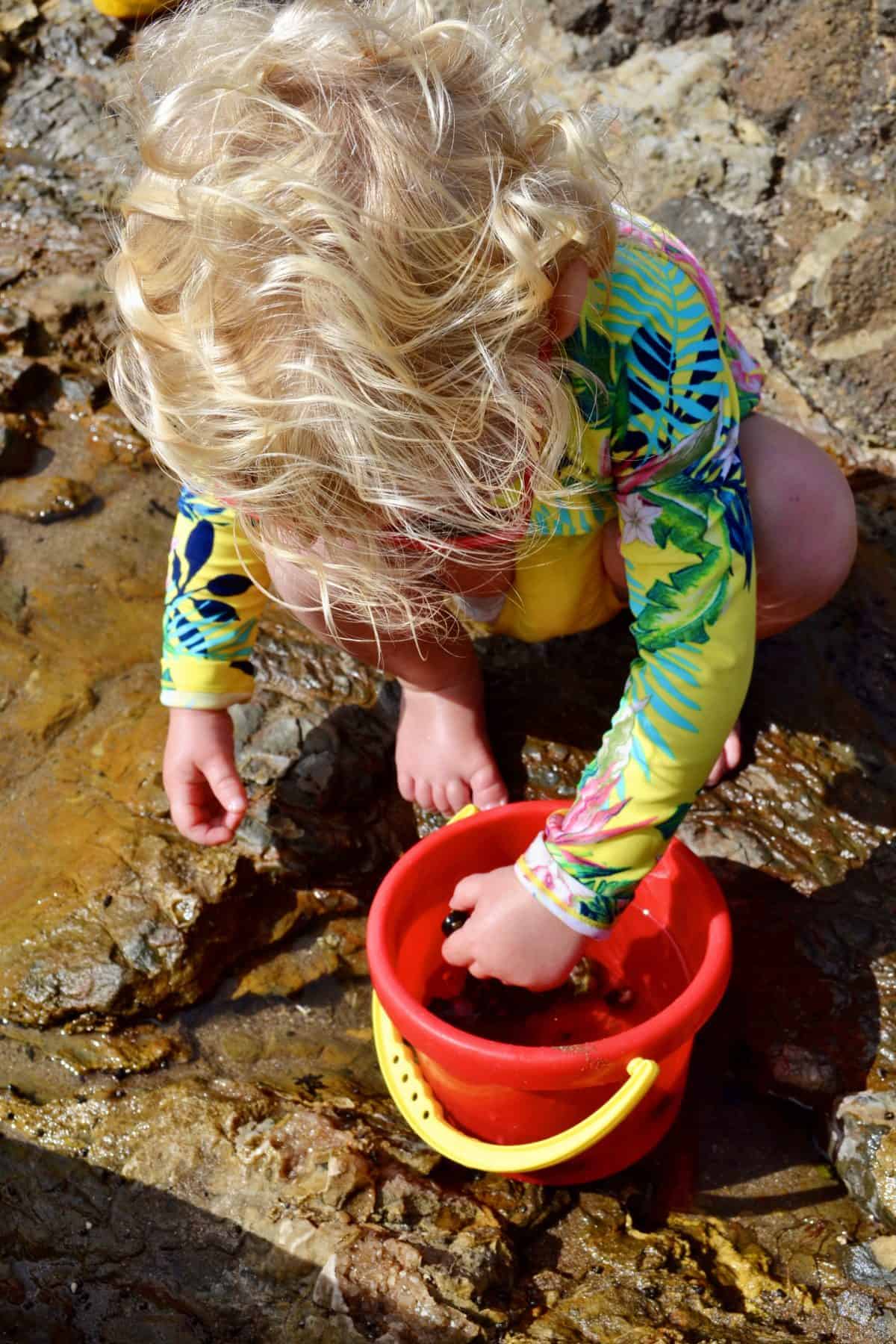
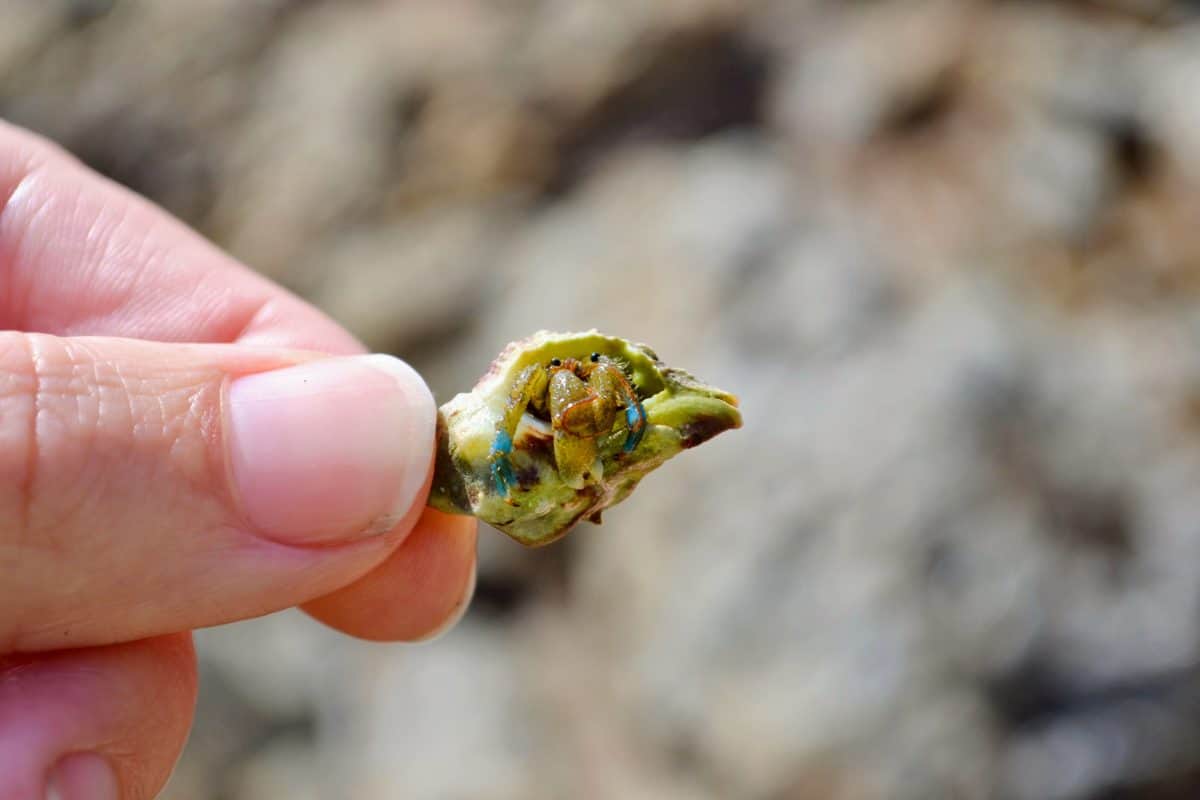
The magic of the tidepools
There is an inexplicable and contagious excitement that everyone has when they are at the tide pools. Be it because a particular sea animal has been found, or a seal or dolphin has been spotted further out at sea. There is a freedom that comes from within those little pools.
When it’s time to leave the pools the sun has kissed our skin. Our lips taste of sea salt. Our fingers and toes have shriveled like raisins from hours in the water. And, stories of our adventures just tumble out of our mouths. We slowly trudge to the car, wishing that we had just one more rock to turn over, one more seashell to find, one more hermit crab to discover.
We know that we’ll be back, because we can never stay away from those magical pools for too long.

Have you ever taken your kids tide pool exploring?
Favorite tide pool creature to find?
Any particular tide pool that you want to visit or love to visit regularly?
About the author
Desirée is a Midwestern girl transplanted to Los Angeles. She is a domestic engineer (also known as a SAHM), mom to Marcus (5), and Julia (almost 2). When the trio isn’t hunting down street art and wall murals in the city they’re off on adventures to their local beaches and hiking trials. In her downtime (ha! what’s that?!) she loves Disney days, running half marathons, reading all the trendy books, and occasionally blogging.
For a better peek into her life check out her personal blog Macke Monologues as well as her Instagram account @desireemacke.
Comments
7 responses to “Exploring Tide Pools with Kids”
This is seriously the BEST information for people who want to check out the tide pools! Even though we live close to the beach, we almost never go, so even packing for the beach, I barely know how to do. You really hit all the points that a newbie tide pool go-er would need to know.
This is such great information about visiting tide pools with kids! I am going to save it and I look forward to exploring when my kiddos get a little older. Thank you for sharing!!!
This is so fun and informative! I’m going to share it on my Blog’s Facebook page! Thanks for writing this and sharing it!
Desiree has made me want to pack the kids up and dive into pool-tiding!! We have the perfect spot right off the coast that is also a great place to find sea glass. Oh the ocean is amazing.
This has a lot of good information on it. Tide times, different sea creatures. There were some points I would like to revisit. First, do not pick up sea creatures. In your article you mentioned trying to pick up the starfish. Touching is okay, but please do not try to hold it on your hand. You do not want to pick up creatures, rather touch them and observe their body language. Second, if you do pick up a crab or something else, ALWAYS put it back where you placed it. Animals are territorial and putting them back in a different spot may cause death. To piggy back that, always leave it how you find it, this includes rocks, pebbles, creatures and anything you find. There is more information on tide pool etiquette online. Lastly, don’t squish sea anemone to see if they squirt water. They have gills to breath, and when they are squished you are ridding them of there oxygen which will kill them. Happy exploration. Cheers!
I like that you’re encouraging getting kiddos out to explore nature, but am kind of irritated that you’re telling people it’s okay to pull sea life off rocks or remove anything from the tide pools. Not only is it not yours to take, but you can also face fines if you do. It doesn’t take much to disrupt the habitat for marine creatures, especially with things like wasting disease in sea stars. Honestly, you’d get an earful from a lot of people up here in WA if you were seen trying to rip a sea star off whatever it’s attached to. You and the kiddos can gently touch some tide pool life (always with wet fingers), but please put rocks gently back where you found them and don’t actually remove anything. Please add that to your tips. You’re on the right track with the reef safe sunscreen, so doing more looking and less touching is the way can help make sure we all can enjoy the tidal life for years to come.
As someone who’s lived on the West Coast for years, it leaves a lot of info out, unfortunately. Some of it is actually illegal and you’ll be justifiably fined. DO NOT remove anything from the beach, pick it up, poke it, or rip it off rocks. It will literally kill the creature. Looking and taking pics/videos are great but up here in WA we don’t take kindly to people feeling entitled to hurt the marine habitats.


Leave a Reply